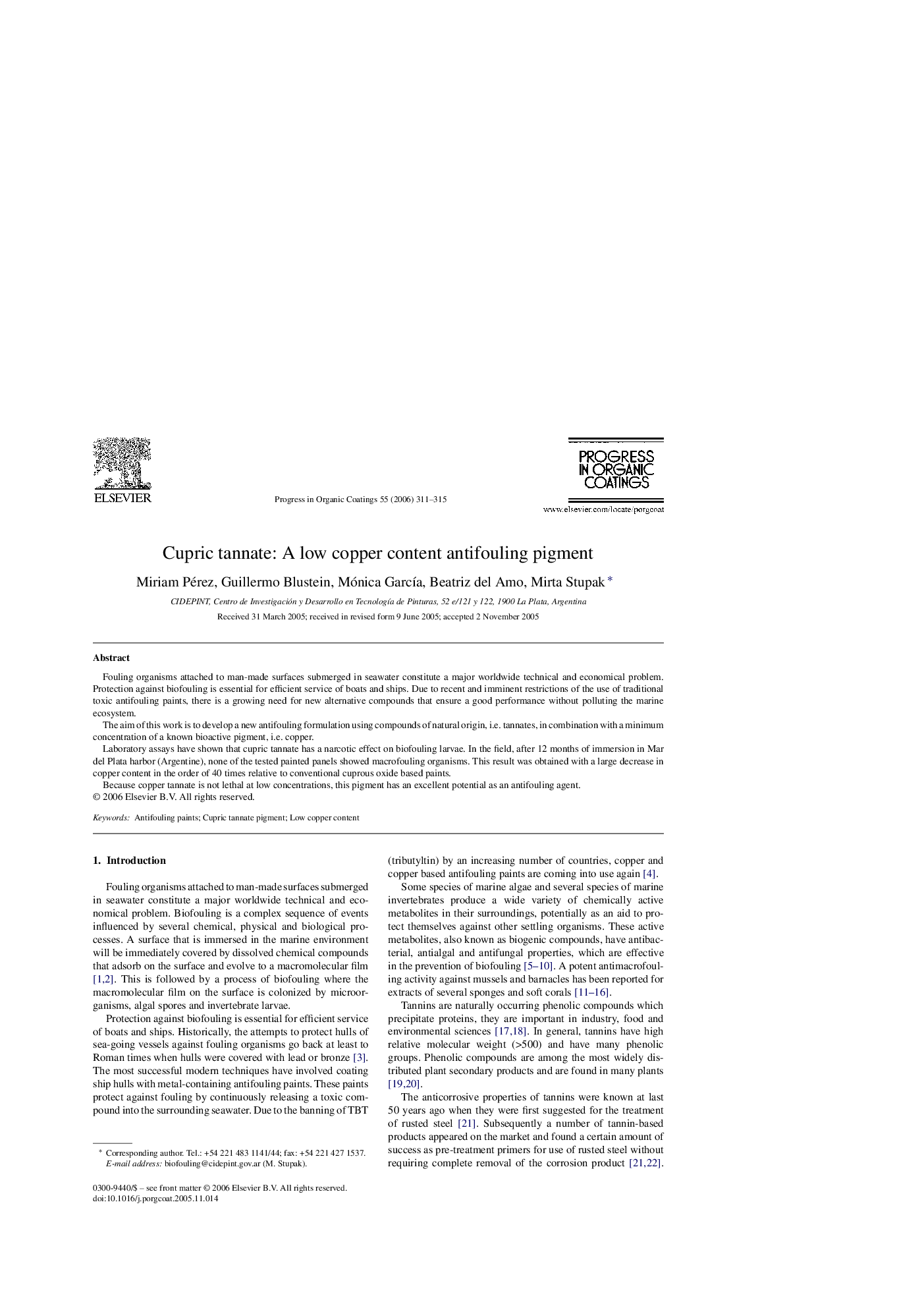| Article ID | Journal | Published Year | Pages | File Type |
|---|---|---|---|---|
| 694031 | Progress in Organic Coatings | 2006 | 5 Pages |
Fouling organisms attached to man-made surfaces submerged in seawater constitute a major worldwide technical and economical problem. Protection against biofouling is essential for efficient service of boats and ships. Due to recent and imminent restrictions of the use of traditional toxic antifouling paints, there is a growing need for new alternative compounds that ensure a good performance without polluting the marine ecosystem.The aim of this work is to develop a new antifouling formulation using compounds of natural origin, i.e. tannates, in combination with a minimum concentration of a known bioactive pigment, i.e. copper.Laboratory assays have shown that cupric tannate has a narcotic effect on biofouling larvae. In the field, after 12 months of immersion in Mar del Plata harbor (Argentine), none of the tested painted panels showed macrofouling organisms. This result was obtained with a large decrease in copper content in the order of 40 times relative to conventional cuprous oxide based paints.Because copper tannate is not lethal at low concentrations, this pigment has an excellent potential as an antifouling agent.
